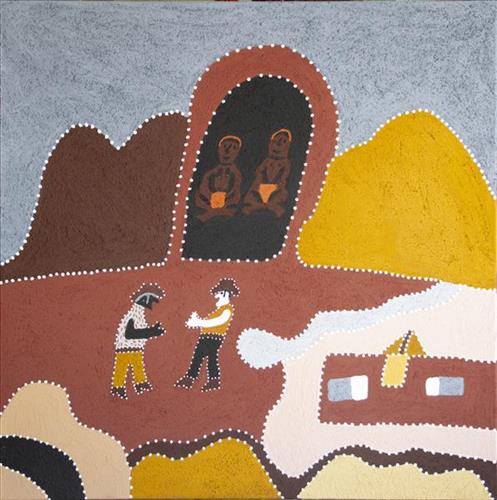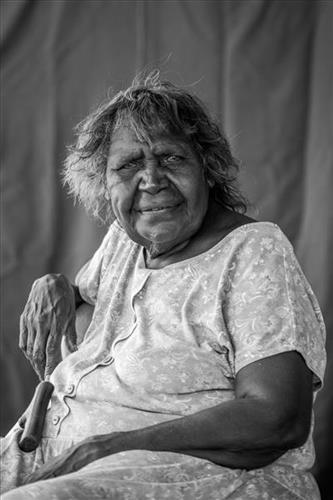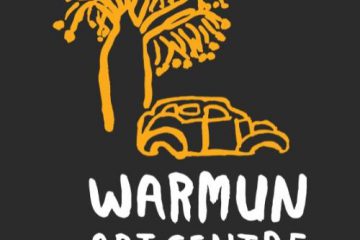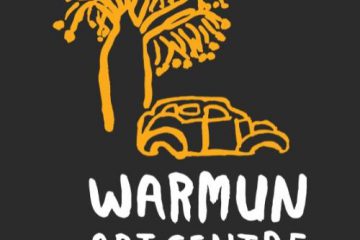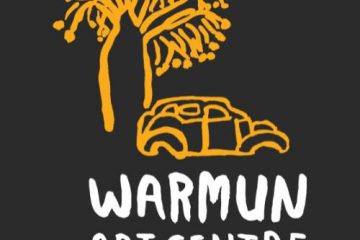110682165104
Old Mabel Downs Station
“This is the story about when my old people where living in the cave, and those two there on top were sitting there well before the Gadia came and put a station on this land.
The new station would be called Mabel Downs, and that old man, the old man who had been there before, found that Gadia building things so he came down and asked for a job. He asked for his wife and him. But they never been give a job to that old lady girl – only him.
When they built the new station, well he bin come into work all the time. And they said to each other, “all right, thank you” “Darmaluk” that means thank you.
They shake hands now, come together you know? Gadia and old man, our old people here, come together in good way. Work together, you know? Happy together.
Old people, before then, they didn’t have house – you can hear by brother sing there too, learning from my dad, you know, looking for food and a good place to camp.”
